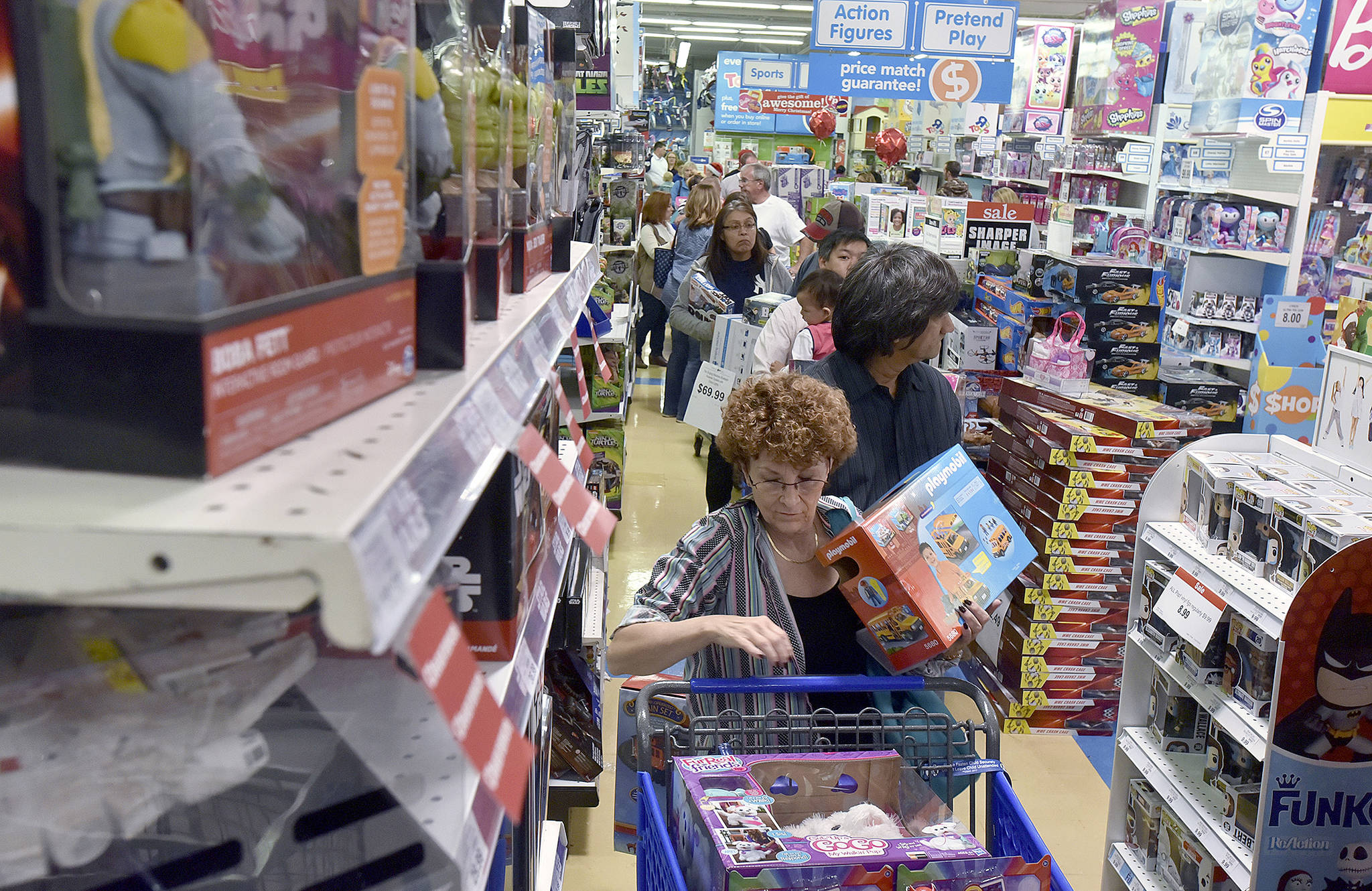By Stephanie Ritenbaugh
Pittsburgh Post-Gazette
Holiday spending is expected to rise this year, largely due to the luck of the calendar and more shoppers being willing to swipe their cards, according to varying projections.
But stagnant wages are still weighing down some households, accounting firm PriceWaterhouseCoopers warned in its assessment of the key shopping season.
The National Retail Federation earlier this month said retail sales in November and December, excluding automobiles, gasoline and restaurants, will climb between 3.6 and 4 percent compared to last year. That would add up to total spending in the range of $678.75 billion to $682 billion.
“Our forecast reflects the very realistic, steady momentum of the economy and overall strength of the industry,” said Matthew Shay, NRF president and CEO, in a statement from the Washington, D.C.-based trade group.
“Although this year hasn’t been perfect, especially with the recent devastating hurricanes, we believe that a longer shopping season and strong consumer confidence will deliver retailers a strong holiday season.”
Christmas falls 32 days after Thanksgiving this year — one day later than last year — and is on a Monday instead of Sunday, giving shoppers an extra weekend day to get presents under the tree.
Hiring during the last months of the year is expected to fall. The retail federation expects stores to hire between 500,000 and 550,000 temporary workers this holiday season, down from last year’s 575,000.
PriceWaterhouseCoopers found that a majority of consumers — 83 percent — plan to spend as much or more this holiday as last year, an average of $1,189 each. But any spending increase will mostly be driven by higher earning households, as many workers face little or no growth in their paychecks.
“Overall, that’s a 6 percent increase, driven mainly by high-income consumers who’ve seen income gains. Most other consumers, while optimistic, are coping with stagnant wages,” PriceWaterhouseCoopers said.
“In fact, our survey found that households with incomes less than $60,000 will decrease spending on gifts and entertainment, boosting only their travel spending,” the firm continued.
“This pattern from our survey results — of high-income households driving spending — reflects broader economic trends in which high-income families have seen the largest income gains,” PwC said. “While median household income did hit a 17-year record at $59,039, rising employment — rather than wage growth — was the contributing factor.”



